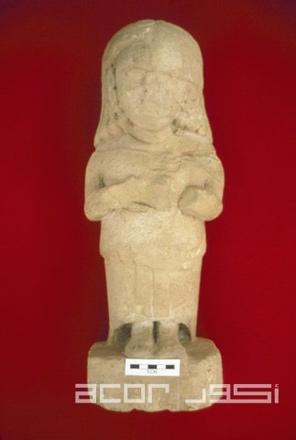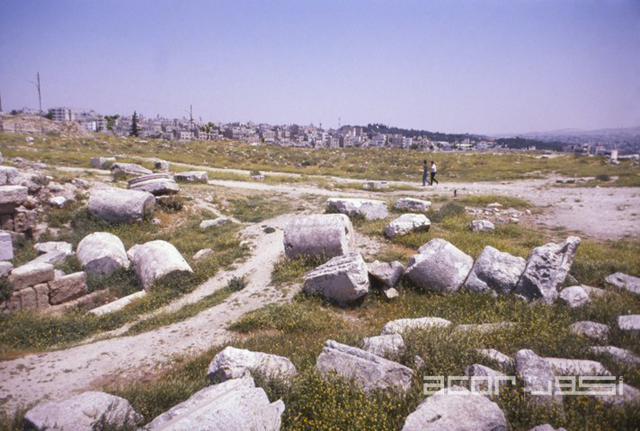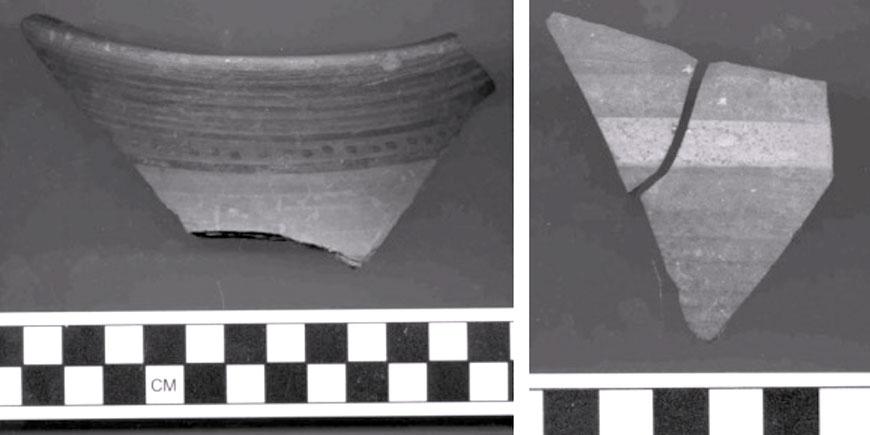You are here
Lecture explores history of Rabbot-Ammon
By Saeb Rawashdeh - Jun 14,2021 - Last updated at Jun 14,2021

An Ammonite statuette of a female from Khirbat Al Hajjar (Photo courtesy of ACOR)
AMMAN — Rabbot-Ammon, literally “the Great [City] of Ammon”, was the capital of the Iron Age kingdom of Ammon, said a German archaeologist during a lecture titled “Rabbot-Ammon in the Iron Age”, which was recently organised by the French institute Ifpo.
“It is very difficult to narrow down the territory in which Ammonites lived because only a few places are preserved and also the archaeological remains are not very informative,” noted Director of the German Protestant Institute of Archaeology Katharina Schmidt.
She added that “we know about a few big Ammonite towns like Sahab and Tell Jawa, which have been excavated”.
However, the western Jordanian plateau represented the western border, while northern border was on the Zarqa River, the steppe represented the eastern border and to the southern border was north of Tell Hisban, near Madaba, Schmidt said.
“Ammon arose at the beginning of the Iron Age II period [1000–c. 600 BC] on the central plateau of Transjordan. The Jabal Al Qal’a, [the Amman Citadel] located in the middle of the modern city of Amman, is the impressive testimony of this early royal city,” she continued.
Schmidt noted that these structures are invisible to visitors today since they are located in the layers below the Umayyad and Roman ruins.
On the top of the citadel researchers found 17 cisterns since there was no natural water resource on the top of the hill, Schmidt said, adding that the citadel consisted of four terraces arranged in an L shape.
“The Ammonite state had no direct access to the Mediterranean Sea or the Red Sea, and of the economic interest was a trade route from the Hijaz,” she emphasised.
She added that the climate in the Iron Age was wetter than nowadays, which enabled Ammonites to rely economically on agriculture.
Furthermore, the system of terraces and dams was built to divert and capture water from the winter rains, the archaeologist explained, noting that in the 8th and 7th centuries BC, Rabbot-Ammon enjoyed economic and cultural prosperity.
From 9th century BC Ammon developed into a kingdom and was a part of the international network stretching from the Red Sea to Mesopotamia, and the centre of the empire was in the modern northern Iraq
This is evidenced by monumental buildings and luxury objects, such as seals, jewellery, and glass vessels found primarily in tombs around the Jabal Al Qal’a, Schmidt said, adding that many of these were imported from the Assyrian heartland.
“These finds demonstrate Ammon’s supra-regional integration into the Neo-Assyrian network. The monumental stone statues of Ammonite rulers and gods found in Rabbot-Ammon and its surrounding area are furthermore an impressive evidence for the representation of the Ammonite kings,” Schmidt said.
Related Articles
AMMAN — The post World War I period marks the beginning of scholarly research in Jordan.
AMMAN — A rescue excavation by the Department of Antiquities (DoA) of Jordan has uncovered a basalt statue in the forum area near the Roman
AMMAN — Rabbat Amman, Madaba, Dibon and Busayra were presumably the main ancient commercial sites in Transjordan and the Levantine coast, ac



















